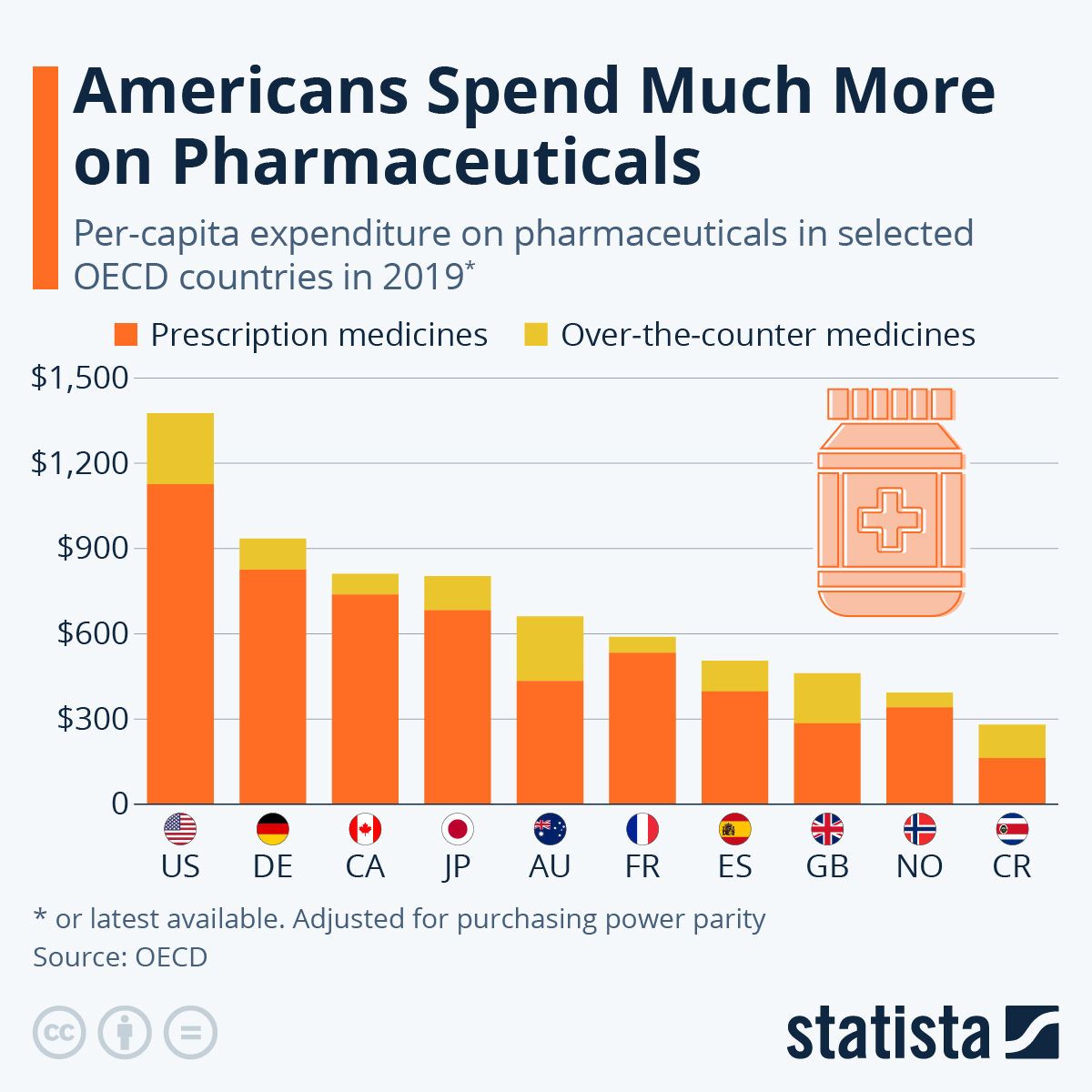
When it comes to the expenditure on pharmaceuticals across OECD countries, the United States spends much more than other industrialized nations that are part of the organization.
You will find more infographics at Statista
In 2019, the average American racks up costs of $1,376 for medications after adjusting for purchasing power parity, almost 2.5 times the OECD average of $571 and still 47 percent more than the next biggest spender, Germany. Canada and Japan followed in third and fourth place, both with spending that was around 40 percent higher than average, at $811 and $803, respectively. The OECD members with the least spending on pharmaceuticals and were Mexico and Costa Rica, while spending was also below average in many Eastern European and Scandinavia nations.
Prescription drugs made up the bulk of pharmaceutical spending in most countries. English-speaking nations on the list, including the United States, Canada, Australia and the UK, shared the characteristic of above-average spending on over-the-counter meds despite their overall expenditure levels diverging quite a bit.
Government and government-mandated insurance covered 55 percent of total pharmaceutical spending across OECD nations, with the share as high as 80 percent in Germany and France. That number was 70 percent in the United States. Across Scandinavia and Eastern Europe, out-of-pocket spending often hovered around 50 percent, hitting as much as 97 percent in Costa Rica.
When it comes to the expenditure on pharmaceuticals across OECD countries, the United States spends much more than other industrialized nations that are part of the organization.
You will find more infographics at Statista
In 2019, the average American racks up costs of $1,376 for medications after adjusting for purchasing power parity, almost 2.5 times the OECD average of $571 and still 47 percent more than the next biggest spender, Germany. Canada and Japan followed in third and fourth place, both with spending that was around 40 percent higher than average, at $811 and $803, respectively. The OECD members with the least spending on pharmaceuticals and were Mexico and Costa Rica, while spending was also below average in many Eastern European and Scandinavia nations.
Prescription drugs made up the bulk of pharmaceutical spending in most countries. English-speaking nations on the list, including the United States, Canada, Australia and the UK, shared the characteristic of above-average spending on over-the-counter meds despite their overall expenditure levels diverging quite a bit.
Government and government-mandated insurance covered 55 percent of total pharmaceutical spending across OECD nations, with the share as high as 80 percent in Germany and France. That number was 70 percent in the United States. Across Scandinavia and Eastern Europe, out-of-pocket spending often hovered around 50 percent, hitting as much as 97 percent in Costa Rica.






